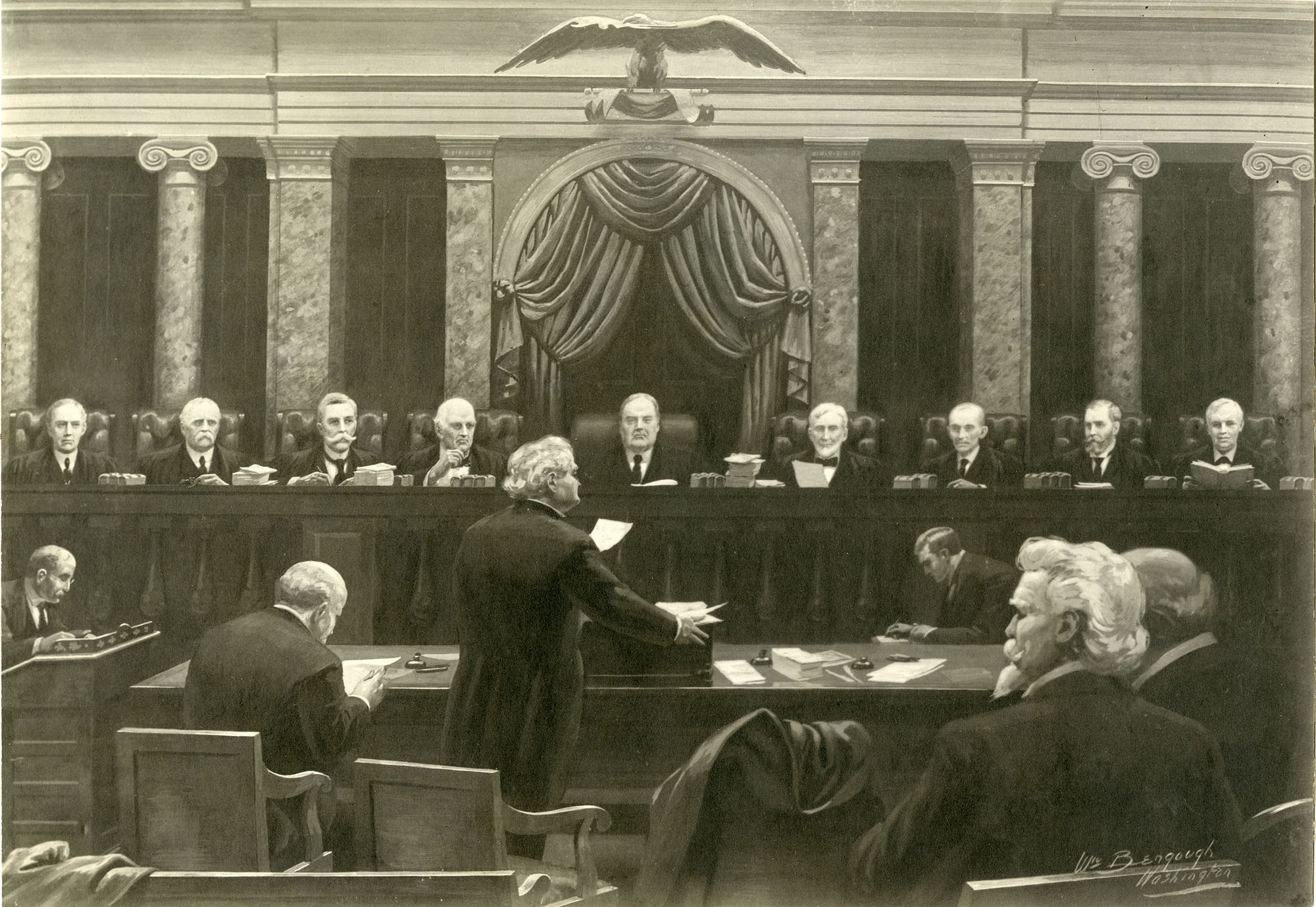Symposium
What prior public-health scares can teach us about the court’s response to COVID-19

on Aug 10, 2021 at 1:47 pm

The Supreme Court has not yet announced whether it will return to normal operations when the 2021-22 term begins in October. This article is part of a symposium about how the coronavirus pandemic changed the court — and which of those changes are worth keeping.
Clare Cushman is resident historian at the Supreme Court Historical Society. This article is adapted from an essay she wrote last year on epidemics and the Supreme Court.
In summer 1793, alarmed by reports of a yellow fever outbreak, the justices fled Philadelphia, hastily adjourning the August term. The Supreme Court convened its sessions there twice a year, in August and February, as Philadelphia served as the nation’s capital from 1790 to 1800. The justices were prudent to postpone cases to the February 1794 term: Between August and November, 5,000 of Philadelphia’s 50,000 residents died in the epidemic. For a second time, in 1798, the court abruptly adjourned its August term when yellow fever struck again, rescheduling arguments for its February 1799 term.
In response to these outbreaks of “contagious sickness,” Congress passed a “quarantine and health law act” on Feb. 25, 1799, that included a provision about the judiciary. Section 7 of the act permitted the chief justice to adjourn the court during “hazardous” conditions and move its sessions “to such other place within the same, or an adjoining district, as he may deem convenient.” Yet it would not be until 1918 that the chief justice faced a decision about whether to hold court sessions during an epidemic. In the fall of that year, the worldwide influenza pandemic killed 3,000 Washington, D.C. residents in a few short months. The Supreme Court was then lodged in the Capitol building, so Chief Justice Edward White did not have full control over decision-making about granting public access to his courtroom. Specifically, the Old Senate Chamber, where the court held session, did not have a separate outside entry and was subject to decisions about the building by the Rules Committee of both houses of Congress.
Nevertheless, the Supreme Court opened for business as usual on Oct. 7, 1918, the first Monday in October after its summer recess. As the city was under “restrictive orders” about public gatherings, however, the court “denied admittance to the Chamber of all persons but lawyers.” In an unprecedented decision, the House voted that day to close its galleries to the public to prevent contagion. The court duly announced that it would close from Tuesday, Oct. 8, until Monday, Oct. 14. But the House and Senate galleries did not reopen until Nov. 4, when the flu was finally waning. The Supreme Court also reopened that day, handing down decisions in the morning and hearing three arguments in the afternoon. After the month-long adjournment, the court had to play catch-up: The justices heard cases argued in the courtroom nearly every day in November. The delay put more pressure on an already jam-packed term.
The next time the court was affected by a public health crisis was in 2001, when anthrax-laden mail was sent to many government departments. The Supreme Court has been ensconced in its own building since 1935 and thus the chief justice, along with the court’s marshal, were in control of decision-making about safety. When the basement mailroom received anthrax-tainted letters, the building was closed for a week to deal with the contamination. The court’s argument schedule was not interrupted, however, as the justices moved to a nearby courthouse used by the U.S. Court of Appeals for the District of Columbia Circuit.
During the COVID-19 pandemic, Chief Justice John Roberts decided to protect the health of attorneys, court staff and the justices themselves by postponing arguments in March and April of 2020 and then switching arguments to the telephone in May. That remote format remained in place for the entirety of the 2020-21 term. Now, with the opening of the 2021-22 term less than two months away, Roberts (in conjunction with the court’s new marshal, Gail Curley) must decide whether to continue remote arguments or return to in-person sessions, perhaps in some reduced capacity.
This year, the first Monday in October may see a return to the courtroom, but, as in 1918, access may be limited to select court staff and attorneys bringing business before the bench. Perhaps the court will find it prudent to bar spectators, or perhaps it will bar anyone who is not vaccinated. But such policies — which at this point are pure speculation — could raise problems. What if an arguing attorney is not vaccinated? And what about the press? If the general public is barred from attending arguments, will the court also try to bar journalists? (Presumably in such a scenario, the court at least would continue providing the audio livestreams that it launched when it shifted to remote arguments.) Perhaps the court would shift to a press “pool” system, allowing a limited number of reporters to watch each argument in person. The court’s history offers few precedents for how to answer these questions.
Whenever the court does return to in-person sessions, will the format of oral argument change based on the experience of telephonic arguments? Some court watchers say it should. They see benefits to each justice having a reserved amount of time to ask questions. Others miss the traditional free-for-all questioning and urge the justices to revert to that practice once they are back in the courtroom. The format of oral argument has changed many times since 1789 — argument time was originally unlimited and has been whittled down periodically, now standing at 30 minutes per side for most cases. Yet until the remote arguments in 2020 prompted a more orderly format, one aspect that was near-constant since at least the mid-1800s was the open-ended and aggressive nature of the questioning, with any justice able to jump in at any time. The Supreme Court is an institution strongly wedded to tradition, and I don’t expect that it will deviate significantly from that practice when business returns to normal.


